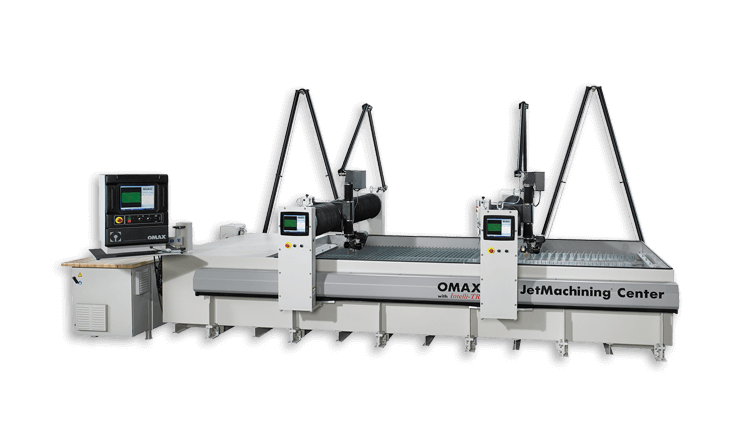Waterjet cutting is a cost-effective process for producing prototypes and small batches for an almost unlimited range of materials. A DXF file of the workpiece to be cut is imported or created directly with the cutting software.
Then the cutting qualities in the contour are determined. This determines the cutting parameters (feed speed or pressure). The material to be machined is positioned on the attachment and cutting can begin. Cutting with water jet is convincing because of particularly short programming and set-up times.
Our water jet cutting machine OMAX 80X is designed for cutting large-format plates in high precision. The cutting system is equipped with Tilt-A-Jet, A-Jet cutting heads and dual bridge to increase cutting capacity and flexibility.

Technical information:
Cutting head:
- Tilt-A-Jet taper removal
- A-Jet 5-Axis
Cutting range: 8.000 x 2.000 mm
Direct drive pump: EnduroMax 50HP
Operating pressure: 4.000 bar